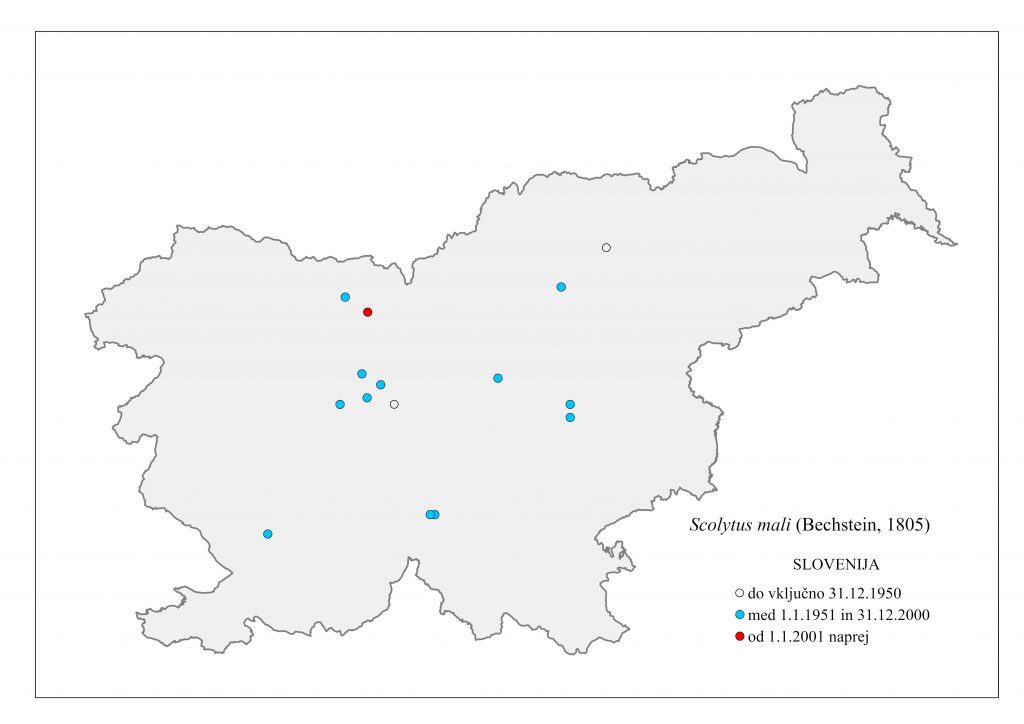32.04. Scolytus mali (Bechstein, 1805)
Presence
E: AU BE BH BU BY CR CT CZ DE EN FI FR GB GE GR HU IR IT LA LT LU MA MC NL NR NT PL RO SK SL SP ST SV SZ UK YU »Caucasus«
N: AG EG MO
A: ES FE IN JIL LIA TR WS
NAR
Figure 155: Scolytus mali, dorsal, lateral (Photo: Maja Jurc)
Older catalogs and keys – citations of name
Grüne 1979: Scolytus mali (Bechstein, 1805); Freude, Harde, Lohse 1981: Scolytus mali Bechstein; Titovšek 1988: Scolytus mali Bechstein; Pfeffer & Knížek 1993: S. mali (Bechstein, 1805); Pfeffer 1995: S. mali (Bechstein, 1805).
Figure 156: Scolytus mali, distribution map according to historical and recent data
Ecology and presence in Slovenia
The species is present in Europe, the Caucasus, the Urals, North Africa, Asia and the Nearctic. It has been recorded in the central part of the country but is not common (Figure 156). Hosts are fruit trees of the Rosaceae family (Cotoneaster multiflorus, Malus spp., Pirus spp., Sorbus aria, S. aucuparia, S. intermedia), also their wild forest relatives, and species of the genera Ulmus and Corylus. In Slovenia, only fruit trees, Malus domestica, Pyrus communis and Prunus domestica, have been recorded as hosts. A monogamous species, it develops two generations per year, the first swarming in May and June, the second in August and September. The maternal tunnel system is longitudinal, the maternal gallery is 3-10 cm long, with 30-60 larval tunnels oriented transversely. Adult length is 3.0-4.5 mm. The abdomen rises obliquely from the 2nd sternite towards the elytra (Figure 155). It colonises physiologically weakened trunks and branches. However, like all elm bark beetles it transmits Dutch elm disease (Ophiostoma ulmi and O. novo-ulmi).



